In today’s busy world, maintaining a healthy diet can be challenging—especially when you’re focused on losing weight. Meal prep is a proven strategy that can help you take control of your nutrition, save time, and keep your calorie intake in check. In this comprehensive guide, we’ll explore simple and delicious healthy meal prep ideas for weight loss. By planning your meals in advance, you can eliminate the stress of daily cooking, avoid unhealthy takeout options, and stay on track with your weight loss goals.
Backed by trusted sources like Mayo Clinic and Healthline, the following tips and recipes will empower you to embrace meal prep as an integral part of your weight loss strategy.
The Benefits of Meal Prep for Weight Loss
Meal prepping offers numerous benefits that can directly contribute to your weight loss efforts:
Portion Control: By preparing your meals ahead of time, you can better control portion sizes, preventing overeating and ensuring a balanced intake of nutrients.
Consistency: With a pre-planned menu, you’re less likely to succumb to impulsive food choices or unhealthy fast-food options.
Time-Saving: Bulk cooking saves time during the week, making it easier to stick to a healthy diet even on your busiest days.
Cost-Effective: Buying ingredients in bulk and planning meals around them can lower your grocery bills while reducing food waste.
Nutritional Balance: When you meal prep, you have the opportunity to plan balanced meals rich in proteins, healthy fats, and fiber—vital components for weight loss and overall health.
For additional insights into the benefits of meal prep, consider reviewing articles on Healthline and Mayo Clinic.
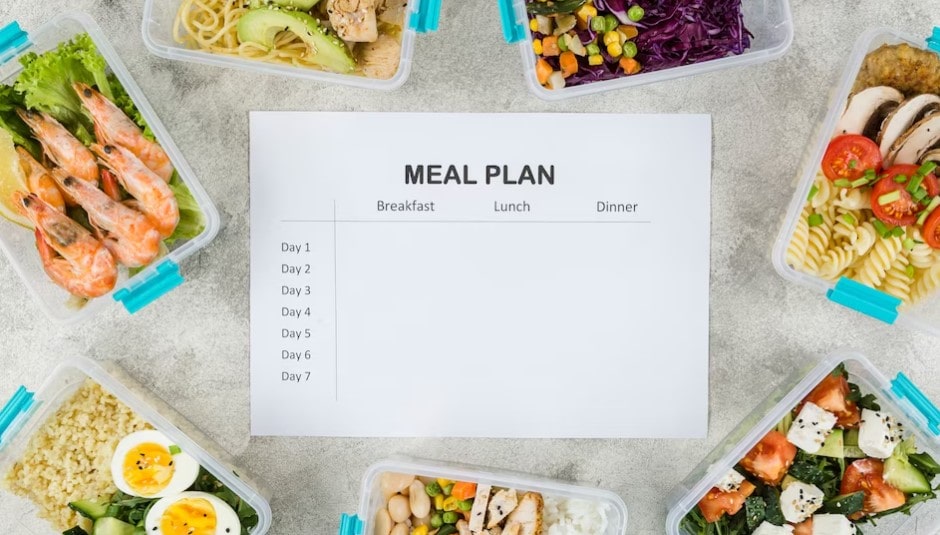
Planning Your Meal Prep: Essential Tips and Strategies
A successful meal prep routine starts with a solid plan. Here are some essential tips to get you started:
Set Your Goals: Define your weight loss goals and decide how many meals you need to prepare for the week. Knowing your calorie and macronutrient needs will help you create a balanced meal plan.
Create a Menu: Choose recipes that are both nutritious and satisfying. Incorporate a variety of fruits, vegetables, lean proteins, and whole grains to keep your meals interesting.
Make a Shopping List: Once you’ve decided on your menu, create a detailed shopping list to ensure you have all the necessary ingredients. This step helps prevent impulse purchases and keeps you within budget.
Schedule Your Prep Time: Dedicate a specific day or time each week to meal prepping. Many find that Sunday afternoons work best for planning the week ahead.
Invest in Quality Storage: Use airtight containers and reusable bags to keep your meals fresh throughout the week. Label your containers with dates to ensure you consume your food before it spoils.
For more practical planning tips, resources like Budget Bytes and Skinnytaste provide excellent guidance on creating meal plans that support weight loss.
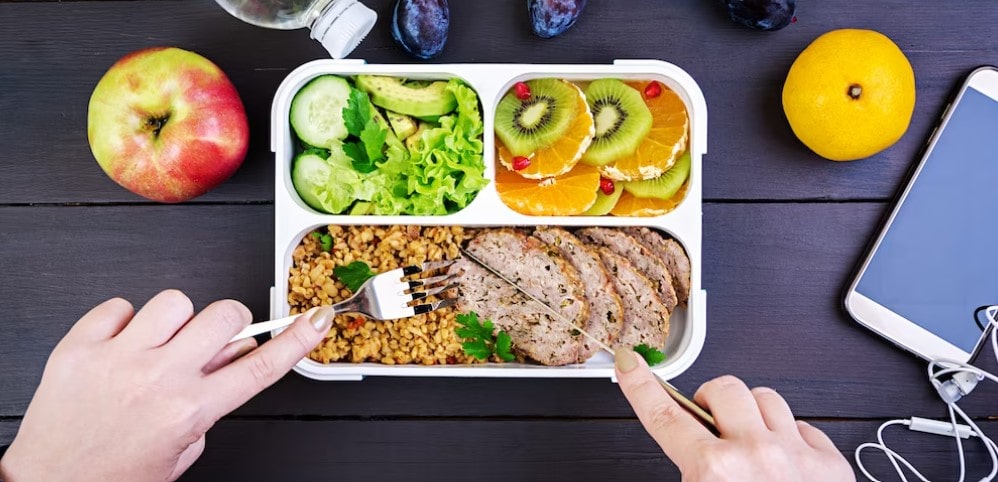
Healthy Meal Prep Recipes for Weight Loss
Having a variety of healthy recipes on hand is crucial for maintaining a successful meal prep routine. Here are a few delicious ideas to inspire your next batch of meal prep:
1. Quinoa and Black Bean Salad
A nutrient-packed salad that combines lean protein, fiber, and essential vitamins. Mix cooked quinoa with black beans, corn, diced bell peppers, and a squeeze of lime juice. Top with a sprinkle of cilantro for added flavor.
2. Grilled Chicken and Veggie Bowls
Marinate chicken breasts with olive oil, lemon juice, garlic, and herbs, then grill until perfectly cooked. Serve with a mix of steamed broccoli, roasted sweet potatoes, and a side of brown rice. This balanced meal provides lean protein and complex carbohydrates to fuel your day.
3. Zucchini Noodles with Pesto and Cherry Tomatoes
Swap traditional pasta for zucchini noodles (zoodles) to reduce calories and increase vegetable intake. Toss with homemade basil pesto, cherry tomatoes, and a touch of Parmesan cheese for a light yet flavorful meal.
4. Overnight Oats with Berries and Nuts
For a quick and healthy breakfast, combine rolled oats with almond milk, chia seeds, and your favorite fruits. Let it sit overnight in the refrigerator, and top with a handful of walnuts or almonds in the morning for a satisfying start to your day.
These recipes are not only delicious but also designed to support your weight loss journey by providing balanced nutrition and steady energy throughout the day.
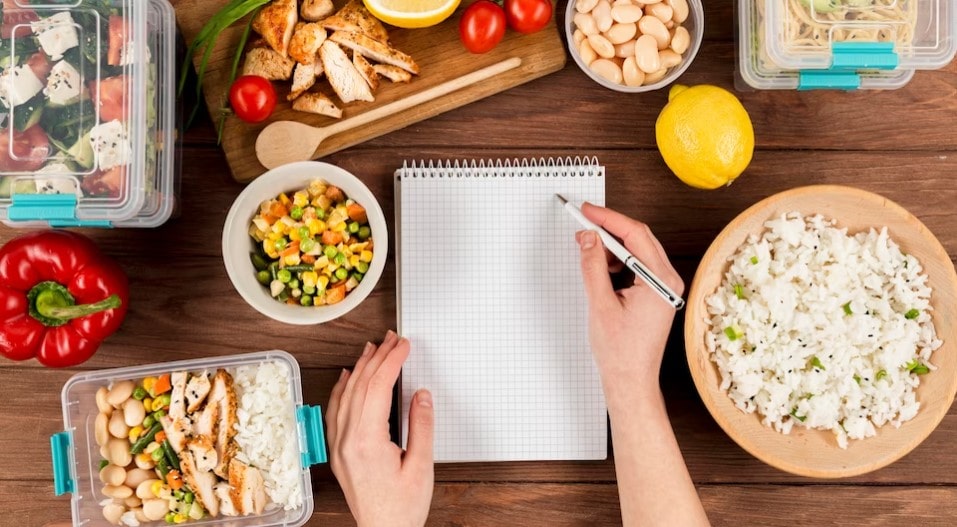
Budget-Friendly Meal Prep Ideas
Healthy eating doesn’t have to break the bank. Here are some budget-friendly meal prep ideas that are both economical and nutritious:
Bulk Cooking: Prepare large batches of staples like brown rice, quinoa, and beans, which can serve as the base for multiple meals throughout the week.
Seasonal Produce: Buy fruits and vegetables that are in season to reduce costs and ensure freshness. Farmers’ markets and local co-ops often offer competitive prices.
Utilize Leftovers: Transform leftovers into new meals. For example, use roasted vegetables from dinner to create a hearty salad or a wrap for lunch the next day.
Plan Meatless Meals: Incorporate vegetarian dishes into your meal plan, as plant-based proteins are often more affordable than meat and can be just as satisfying.
DIY Snacks: Prepare your own healthy snacks, such as veggie sticks with hummus or homemade energy balls, rather than purchasing pre-packaged items.
For additional cost-saving tips on meal prep, check out articles on Budget Bytes and The Kitchn.
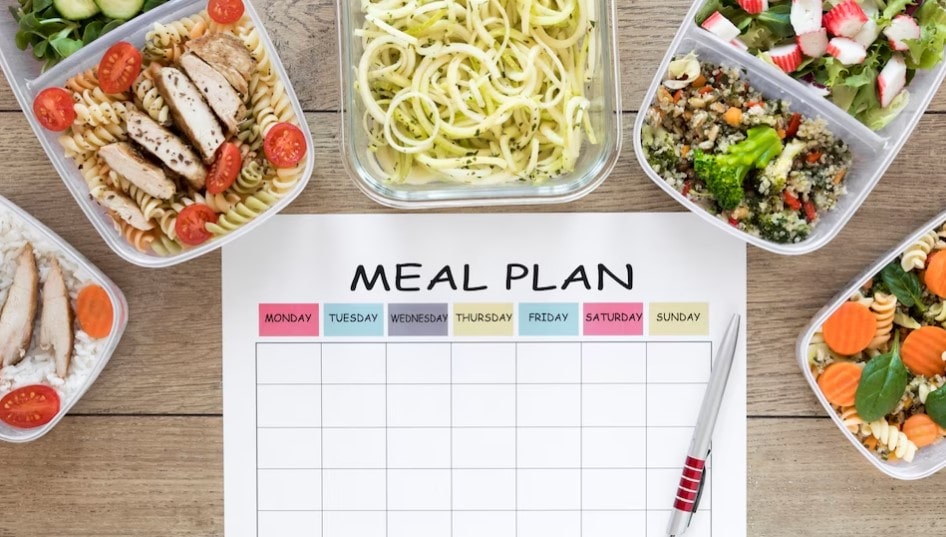
Time-Saving Techniques for Busy Individuals
Time is a precious resource, and efficient meal prep can free up valuable minutes in your busy schedule. Here are some strategies to streamline your meal prep process:
Batch Cooking: Cook large quantities of staples like grains and proteins in one go. Portion them out immediately into meal-sized containers for the week.
Simple Recipes: Choose recipes with minimal ingredients and straightforward instructions. The simpler the recipe, the less time you’ll spend cooking and cleaning.
Pre-Cut Vegetables: Purchase pre-cut or frozen vegetables if you’re short on time. These can be just as nutritious as fresh produce and significantly reduce prep time.
Kitchen Tools: Invest in quality kitchen tools, such as a slow cooker, Instant Pot, or food processor, which can speed up the cooking process.
Multi-Tasking: Use downtime while cooking to clean up or start prepping your next dish. This multitasking approach can save you hours over the course of a week.
Efficient meal prep is all about creating a system that works for you. With a little planning and the right tools, you can enjoy healthy, home-cooked meals every day without spending all your free time in the kitchen.
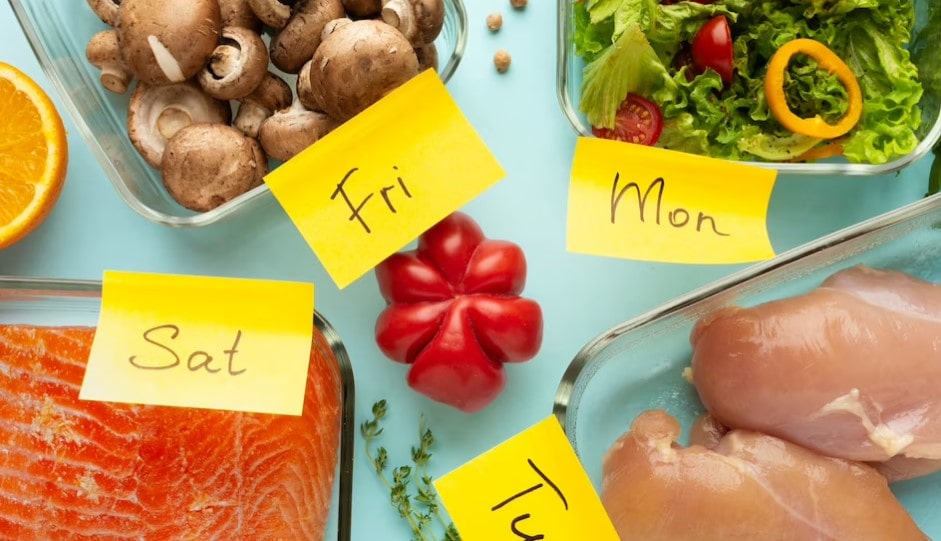
Maintaining Balanced Nutrition Through Meal Prep
Achieving weight loss isn’t just about reducing calories—it’s about maintaining balanced nutrition to support overall health. A well-rounded meal prep plan should include a mix of macronutrients and micronutrients that fuel your body and keep you satisfied.
Key Components for Balanced Meals:
Proteins: Include lean proteins such as chicken, fish, tofu, and legumes to support muscle repair and keep you feeling full.
Healthy Fats: Incorporate sources of healthy fats like avocados, nuts, seeds, and olive oil, which are essential for hormone production and overall health.
Complex Carbohydrates: Choose whole grains, such as brown rice, quinoa, and whole wheat pasta, which provide long-lasting energy and fiber.
Fruits and Vegetables: Aim for a variety of colorful fruits and vegetables to supply vitamins, minerals, and antioxidants that support immune function and overall vitality.
By focusing on balanced nutrition, you ensure that your meal prep efforts contribute to sustainable weight loss while promoting overall health and well-being. For more details on balanced diets, refer to Harvard T.H. Chan School of Public Health and Mayo Clinic.
Storing and Reheating: Best Practices for Preserving Meal Quality
Once your meals are prepped and ready, proper storage and reheating are crucial to maintain freshness, flavor, and nutritional value. Here are some best practices to keep your meals delicious throughout the week:
Airtight Containers: Use high-quality, airtight containers to store your meals. This helps prevent spoilage and keeps your food fresh.
Label and Date: Always label your containers with the date of preparation so you can monitor freshness and ensure you’re consuming your meals while they’re at their best.
Refrigeration and Freezing: Store meals that you plan to eat within a few days in the refrigerator. For longer storage, consider freezing portions and thawing them as needed.
Reheating Tips: When reheating, use a microwave or stovetop to warm your food evenly. Avoid overcooking, as it can diminish the nutritional content and alter the texture of your meals.
For more storage and reheating tips, the USDA Food Safety Guidelines offer comprehensive advice to ensure your food stays safe and delicious.
Staying Motivated and Consistent with Your Meal Prep Routine
Building a meal prep routine can be a game changer for weight loss and overall health, but staying motivated and consistent is key to long-term success. Here are some strategies to keep you on track:
Set Clear Goals: Define your weight loss and health goals clearly. Knowing why you’re meal prepping can serve as a powerful motivator.
Track Your Progress: Keep a journal or use a meal prep app to monitor your progress. Record your meals, note changes in your weight or energy levels, and celebrate your achievements.
Mix It Up: Avoid monotony by rotating recipes and trying new ingredients. Variety not only keeps your taste buds excited but also ensures you get a wide range of nutrients.
Involve Family or Friends: Meal prep can be a fun, collaborative activity. Involve your family or friends in planning and cooking together. This social aspect can boost motivation and make healthy eating a shared experience.
Reward Yourself: Set milestones and reward yourself when you meet your meal prep goals. Whether it’s a new kitchen gadget or a fun outing, rewards can reinforce positive habits.
For more motivational tips and resources on building sustainable healthy habits, check out Verywell Fit and MindBodyGreen.
Conclusion – Transform Your Weight Loss Journey with Healthy Meal Prep
Incorporating healthy meal prep ideas into your daily routine is a powerful strategy for achieving sustainable weight loss and overall wellness. From planning your meals and adopting balanced nutrition to embracing budget-friendly recipes and efficient time-saving techniques, every step you take contributes to a healthier, more vibrant lifestyle.
By following the tips outlined in this guide—such as changing your eating habits, using fresh ingredients, and investing in proper storage—you set yourself up for success. Not only will you enjoy delicious, nutritious meals every day, but you’ll also build a solid foundation for long-term weight loss and improved health.
Remember, consistency is key. Over time, the small changes you make in your meal prep routine can lead to significant transformations in your body and overall well-being. Empower yourself with the knowledge and tools provided here, and start your journey to a healthier, more confident you.
For further expert advice and inspiration, be sure to visit trusted sources like Mayo Clinic, Healthline, and Harvard T.H. Chan School of Public Health. These platforms offer additional insights to help you refine your meal prep strategy and achieve your weight loss goals.
Embrace the power of meal prep today—your journey to a healthier, happier life starts with the choices you make in the kitchen. Enjoy the process, experiment with new recipes, and most importantly, savor every delicious bite on your path to weight loss success!








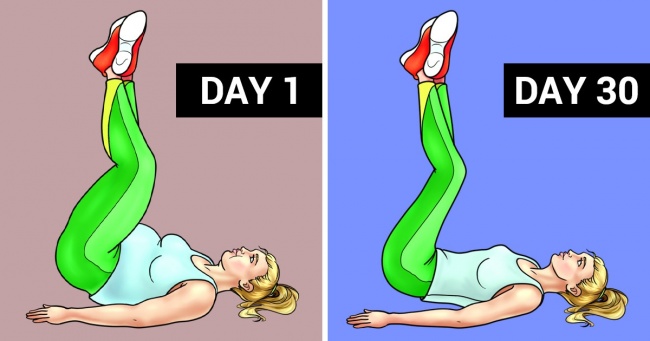
Leave a Reply